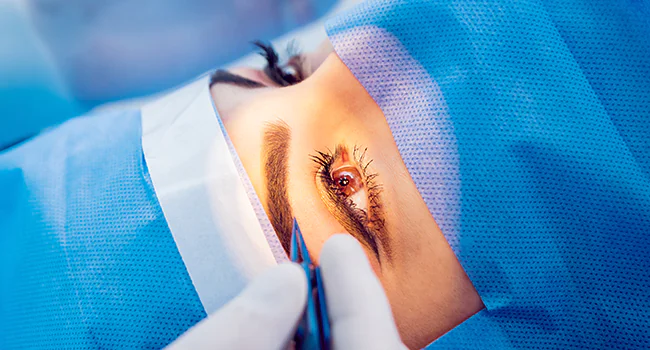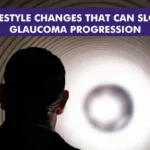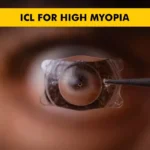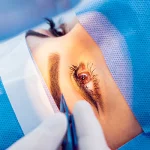Vision correction has come a long way, and laser eye treatment has revolutionised the way people achieve clearer vision without dependency on glasses or contact lenses. If you are considering this treatment, understanding what is laser eye treatment, its different types, and the post-operative care process is essential.
In this blog, we will explain the various types of laser eye surgery, outline precautions after the surgery, and answer common questions such as what is the cost of laser eye surgery.
What Is Laser Eye Treatment?
Laser eye treatment refers to surgical procedures that use laser technology to reshape the cornea, thereby correcting vision problems. It is performed by ophthalmologists who specialise in refractive surgeries.
By altering the cornea’s curvature, laser eye treatments enable light to focus correctly on the retina, improving vision. The procedure is painless, highly precise, and takes only a few minutes per eye.
Laser eye surgery is commonly used to treat:
- Myopia (Nearsightedness)
- Hyperopia (Farsightedness)
- Astigmatism
- Presbyopia (Age-related near vision loss)
Why Should One Consider Laser Eye Treatment?
Laser eye treatment is a safe, advanced, and effective solution for correcting refractive errors. It provides freedom from glasses or contact lenses, improving both visual clarity and quality of life.
Laser eye surgery offers permanent results with minimal risks and quick recovery time for individuals who struggle with vision correction methods or wish to lead an active lifestyle.
Different Types of Laser Eye Surgery
SILK (Smooth Incision Lenticule Keratomileusis)
SILK is the latest advancement in laser eye surgery, offering a minimally invasive procedure that reshapes the cornea with exceptional precision. It provides faster recovery, fewer complications, and a smoother surgical experience.
SMILE (Small Incision Lenticule Extraction)
SMILE is a bladeless, minimally invasive procedure ideal for patients with myopia and mild astigmatism. The surgery involves creating a small incision to remove a lenticule, thereby reshaping the cornea. Patients experience quicker healing and minimal discomfort.
Contoura Vision
Contoura Vision is a topography-guided laser treatment that customises vision correction based on the individual corneal map. It provides sharper vision, reduced glare, and improved night vision, making it ideal for those seeking advanced precision.
LASIK (Laser-Assisted In Situ Keratomileusis)
LASIK is one of the most widely performed procedures. A thin flap is created on the cornea, and a laser is used to reshape the underlying tissue. The flap is then repositioned, allowing for quick healing and rapid visual recovery.
ICL (Implantable Collamer Lens)
ICL involves placing a lens implant inside the eye, making it a suitable option for patients with high refractive errors or thin corneas who are not eligible for LASIK. The lens is invisible, biocompatible, and offers long-term correction.
PRK (Photorefractive Keratectomy)
PRK was the first laser eye surgery developed and is still preferred for patients with thin corneas. Unlike LASIK, no flap is created. Instead, the corneal surface layer (epithelium) is removed, and the cornea is reshaped using a laser. Recovery takes slightly longer than LASIK.
Epi-LASIK
Epi-LASIK is a variation of PRK where a thin layer of epithelial tissue is removed and repositioned after reshaping the cornea. It combines the benefits of both PRK and LASIK and is suitable for patients with sensitive eyes.
Post-Surgery Care: What You Need to Know
Proper care is essential for a smooth recovery and optimal results. Here are the key precautions after laser eye surgery:
1. Avoid Rubbing Your Eyes
It’s natural to feel some itchiness or irritation after surgery, but rubbing your eyes can disrupt the healing process or even dislodge the corneal flap created during the procedure. If discomfort persists, use lubricating eye drops as prescribed by your doctor.
2. Use Prescribed Eye Drops
Your ophthalmologist will provide medicated eye drops to prevent infection, reduce inflammation, and keep your eyes moist. Follow the dosage instructions carefully, and always wash your hands before application to avoid introducing bacteria.
3. Wear Protective Eyewear
Protective eyewear or shields are often recommended, especially during sleep, to prevent accidental rubbing or pressure on the eyes. Additionally, wearing sunglasses outdoors helps shield your eyes from harmful UV rays and bright light, which can be uncomfortable post-surgery.
4. Limit Screen Time and Avoid Eye Strain
Refrain from using digital devices, reading, or engaging in activities that require intense focus for at least a week. Overexerting your eyes too soon can cause discomfort and delay healing.
5. Avoid Swimming or Heavy Exercise
Swimming pools, hot tubs, and even natural water sources can harbour bacteria, increasing the risk of infection. Strenuous physical activity should also be avoided as it may raise intraocular pressure, potentially complicating recovery.
6. Attend Follow-Up Appointments
Post-surgery check-ups are critical for tracking your recovery and ensuring there are no complications. Your doctor may adjust your medication or provide additional advice based on your progress.
By adhering to these guidelines, you can safeguard your vision and enjoy the full benefits of your laser eye surgery. Always consult your ophthalmologist if you have concerns or experience unusual symptoms during recovery.
How to Choose the Right Type of Laser Eye Surgery for You
Selecting the right type of laser eye surgery depends on individual factors such as eye health, refractive error, and lifestyle. Here are key considerations:
- Corneal Thickness: LASIK may not be suitable for thin corneas; PRK or SMILE are better options.
- Refractive Error: ICL is ideal for patients with severe myopia or hyperopia.
- Lifestyle: Active individuals may benefit from bladeless procedures like SMILE or SILK, which have faster recovery times.
- Budget: Different procedures have varying costs. Discuss the cost for each type with your eye specialist.
- Personalised Consultation: Your ophthalmologist will recommend the best procedure based on a detailed eye evaluation.
Looking for Vision Correction Within a Budget? Book an Appointment with Centre for Sight to Know More!
Frequently Asked Questions
Most patients experience mild irritation, sensitivity to light, and watery eyes for the first 24 hours. These symptoms improve quickly, and vision stabilises within a few days.
Laser eye surgery is considered safe, effective, and life-changing for many people. It reduces or eliminates the need for glasses or contact lenses, providing clear, natural vision.
Typically, 2-3 days of rest is recommended. However, most patients can resume routine activities within a week, following proper post-operative care.
Laser eye surgery has a high success rate, with most patients achieving 20/20 vision or better. Success depends on factors such as eye health, age, and following post-surgery precautions.
Complications are rare when performed by experienced surgeons. However, risks like dry eyes, glare, or under-correction can occur. A thorough pre-surgery evaluation minimises these risks.





